#1990&039;s Movies
Explore tagged Tumblr posts
Text
'The Fugitive' Movie and 4K Review
The following review was written by Ultimate Rabbit correspondent, Tony Farinella. It’s rare I use the word perfect to describe a film, but it certainly applies to 1993’s “The Fugitive.” Now, when I say this film is perfect, I’m not saying it is one of the greatest films in the history of cinema. It is perfect because it is a film that is exactly what it needs to be for its genre in terms of…
View On WordPress
#1990&039;s Movies#1993 Movies#4K#4K UHD#4K Ultra HD#Andreas Katsulas#Andrew Davis#Andy Romano#Arnold Koperlson#Chicago#Daniel Roebuck#David Twohy#Dick Cusack#Harrison Ford#Jane Lynch#Jeb Stuart#Jeroen Krabbe#Joe Pantoliano#Johnny Lee Davenport#Julianne Moore#Kopelson Entertainment#L. Scott Caldwell#Neil Flynn#Nick Searcy#Ron Dean#Roy Huggins#Sela Ward#The Fugitive#Thomas Mills Wood#Tommy Lee Jones
3 notes
·
View notes
Text
My Favourite Teen Movies: Part 1 - the 1990's
My Favourite Teen Movies: Part 1 – the 1990s Although the 1980s is largely considered the decade that spawned the some of the most iconic teen movies (and popularised that magnificent beast that is the teen movie soundtrack – for which I am forever grateful); I have a lot of fondness for the movies that were released in the 1990s and 2000s (even though the ‘golden age’ of the teen movie was by…

View On WordPress
#10 things i hate about you#1990s movies#american pie#Buffy the Vampire Slayer#can&039;t hardly wait#Clueless#cruel intentions#dazed and confused#discussion posts#disturbing behavior#don&039;t tell mom the babysitter&039;s dead#Empire Records#favourite teen films#hackers#i know what you did last summer#mallrats#my favourite 1990s & 2000s teen movies#My Favourite Teen Movies#My Favourite Teen Movies: Part 1 - the 1990&039;s#never been kissed#pump up the volume#school ties#scream#she&039;s all that#teen films#teen movies#the craft#the faculty
2 notes
·
View notes
Text
Ninth Anniversary: Twelve Reviews in One… More Time!
Nine years, holy cow. I’m still here to have a good time despite all the pauses and hiccups, so here’s another year’s worth of mini-reviews! Let’s begin, shall we? Continue reading Ninth Anniversary: Twelve Reviews in One… More Time!

View On WordPress
#1980&039;s#1990&039;s#2D animation#30th anniversary#80s#9th anniversary#A Christmas Carol#action#adventure#Alexander Borodin#allistair sim#Animaniacs#animated feature#animated movie#animated movie review#anime#anniversary#Arnold Schwarzenegger#Ben-Hur#Big Bird#blog#Charlton Heston#Christmas#classic disney#Comedy#Cookie Monster#Curse of the Black Pearl#Disney#disney animated#disney animated movie
1 note
·
View note
Text
15 Flawless Movies: Timeless Classics that Define Perfection
In the vast landscape of cinema, there are some movies that stand out as true gems, capturing the hearts and minds of audiences around the world. These cinematic masterpieces are often hailed as flawless, as they excel in storytelling, direction, acting, and emotional impact. Join us as we take a journey through 15 timeless movies that have left an indelible mark on the history of…

View On WordPress
#12 Angry Men (1957)#15 flawless movies#Best Movies#Casablanca (1942)#Forrest Gump (1994)#Gladiator (2000)#Goodfellas (1990)#Inception (2010)#Movies#Pulp Fiction (1994)#Schindler&039;s List (1993)#The Dark Knight (2008)#The Godfather (1972)#The Godfather Part II (1974)#The Lord of the Rings: The Return of the King (2003)#The Matrix (1999)#The Shawshank Redemption (1994)#The Silence of the Lambs (1991)
0 notes
Text
Will by Will Smith & Mark Manson #AudiobookReview
I really like Will Smith as an actor, and sometimes when one of my favorites writes a memoir, I'm left feeling a lot more "meh" about the person. Would I feel the same about #Will by #WillSmith & #MarkManson #AudiobookReview #moviestar #hollywood
“Will Smith’s transformation from a West Philadelphia kid to one of the biggest rap stars of his era, and then one of the biggest movie stars in Hollywood history, is an epic tale — but it’s only half the story. Will Smith thought, with good reason, that he had won at life: Not only was his own success unparalleled, his whole family was at the pinnacle of the entertainment world. Only they…

View On WordPress
#1990&039;s Movies#Bad Boys#DJ Jazzy Jeff#Fresh Prince of Bel-Air#Hollywood&039;#Independence Day#Jada Pinkett Smith#Jaden Smith#Memoir#Men in Black#Movie Star#The Fresh Prince#The Pursuit of Happyness#Will Smith#Willow Smith
2 notes
·
View notes
Text
Franchise Expansion (Or Implosion): ‘Mortal Kombat: Annihilation'
Franchise Expansion (Or Implosion): ‘Mortal Kombat: Annihilation’
Franchise Expansion (or Implosion) is a column that looks at franchises that have new installments or releases forthcoming. In looking at a franchise, each entry in a franchise will be given a review and then be examined as part of the bigger franchise. (i.e., Was this sequel a worthy expansion of this franchise or was it an implosion of sorts?) To say video game adaptation adaptations are not a…

View On WordPress
#1990&039;s#1997#action movie#adaptation#arcade game#box office#Christopher Lambert#fantasy film#fighting games#film#franchise#Franchise Expansion (or Implosion)#Jax#martial arts#martial arts film#Mortal Kombat#Mortal Kombat 11#movies#New Line Cinema#Paul w.s. Anderson#reboots#scorpion#sequel#ultra-violent#video game#video games
2 notes
·
View notes
Text
Delicatessen
My ★★★★★ review of Delicatessen #FilmReview #Cinema
Delicatessen (1991) Plot – Post-apocalyptic surrealist black comedy about the landlord of an apartment building who occasionally prepares a delicacy for his odd tenants – Delicatessen. Directors – Marc Caro, Jean-Pierre Jeunet Starring – Marie-Laure Dougnac, Dominique Pinon, Pascal Benezech Genre – Comedy | Crime | Sci-Fi Released – 1991 ⭐⭐⭐⭐⭐ Rating: 5 out of 5. If you liked: Amélie, Ed…
View On WordPress
#1990s Cinema#★★★★★#cinema#Comedy#Crime#Dominique Pinon#European cinema#Film#film review#french cinema#It&039;s the End of the World#Jean-Pierre Jeunet#Marc Caro#Marie-Laure Dougnac#movie review#Pascal Benezech#Sci-Fi#science fiction#World Cinema
0 notes
Video
youtube
Watch the “Captain Marvel” Trailer RIGHT HERE, RIGHT NOW…. ...There is no other place I want to be-eeeee... Anyways, this morning on Good Morning America, Marvel dropped the trailer to their next entry in the Marvel Cinematic Universe, Captain Marvel.The 1990s-set film shows US Air Force pilot Carol Danvers (played my Brie Larson), whose already gotten her powers, leaves Earth to join the Starforce, where she’ll run into Ronan (played by Lee Pace, the antagonist from Guardians of the Galaxy) and the Skrulls, a shape-shifting race of aliens who have long been long-time villains in Captain Marvel’s comics and related lore.
#1990#90&039;s#Brie Larson#captain marvel#Cinematic#Clarke Gregg#disney#marvel#mcu#movie#Samuel l Jackson#trailer#universe
1 note
·
View note
Text
Invaders form mars
Invaders form mars review William Cameron Menzies’ frightening portrayal of a Martian menace is blessed with his own fantastic production design, brilliantly weaving a world from a child’s perspective as this fun b-movie is fades form memory as i review this movie also the 1986 remake as also i do a modern remake of it with mar’s attacks all three movies really are the mar’s invading us idea…

View On WordPress
0 notes
Text
Ask Phillip Williams: Larry Garfield- Other People's Money (1991) 'Failure to Innovate, Obsolescence'
Ask Phillip Williams: Larry Garfield- Other People’s Money (1991) ‘Failure to Innovate, Obsolescence’

Source:Ask Phillip Williams– Larry Garfield (played by Danny DeVito) in Other People’s Money (1991)
“Larry the Liquidator discusses how to kill a company.”
From Ask Phillip Williams
Larry Garfield (played by Danny DeVito) is right about one thing in this speech (and that might be the only thing) which is when you stop innovating and you get comfortable, you lose your edge, that’s when you start…
View On WordPress
#1991#Alvin#America#Comedy#Danny DeVito#Hollywood#Norman Jewison#Other People&039;s Money#Other People&039;s Money 1991#Other People&039;s Money 1991 Movie#Sargent#Satire#The 1990s#United States
0 notes
Text
GREAT MOMENTS IN ACTION HISTORY: LEARNING LESSONS THE HARD WAY IN THE LAST BOY SCOUT
GREAT MOMENTS IN ACTION HISTORY: LEARNING LESSONS THE HARD WAY IN THE LAST BOY SCOUT
“If you touch me again I’ll kill you.” Action movies are full of such threats. In fact it would be hard to find one that doesn’t include a similar murderous promise. But few are as memorable as Bruce Willis’ whispered warning in The Last Boy Scout (1991). For the three readers who haven’t seen the film, the Die Hard star plays a sleazy private eye who teams up with a washed up ex-quarterback to…
View On WordPress
#1990s#90&039;s Action#Action Movies#Bruce Willis#Exploding Helicopter#Great Moments in Action History#Shane Black#The Last Boy Scout
1 note
·
View note
Text
'Se7en' Movie and 4K Review
The following review was written by Ultimate Rabbit correspondent, Tony Farinella. When it comes to 1990’s cinema, it’s difficult to find a film as popular or as well-received as “Se7en.” It became part of the pop-culture zeitgeist when it was released, and it still is a film which elicits a strong reaction from audiences today. Whenever people talk about it, they instantly quote Brad Pitt’s…

View On WordPress
#1990&039;s Movies#1995 Movies#4K#4K UHD#4K Ultra HD#Andrew Kevin Walker#Arnold Kopelson#Arthur Max#Brad Pitt#Brant Biles#Crime#Darius Khondji#David Fincher#DTS HD#Gwyneth Paltrow#Howard Shore#Kevin Spacey#Michael De Luca#Morgan Freeman#New Line Cinema#R. Lee Ermey#Ren Klyce#Richard Dyer#Richard Francis Bruce#Robert Margouleff#Se7en#Seven#thriller#Tony Farinella#Twist Endings
1 note
·
View note
Text
My Favourite Teen Movies: Part 2 - the 2000's
My Favourite Teen Movies: Part 2 – the 2000’s It’s time for the second part of my favourite teen movies retrospective! This part is going to cover films from the 2000s, the majority of which are from the earlier part of the decade though there are a couple of later ones that snuck their way onto my list. I was actually surprised by how many of my favourites fell into this time period – I felt for…

View On WordPress
#13 Going On 30#17 again#2000s movies#adventureland#almost famous#bend it like beckham#bring it on#crazy/beautiful#discussion posts#donnie darko#eurotrip#favourite teen films#final destination#get over it#it&039;s a boy girl thing#jennifer&039;s body#john tucker must die#legally blonde#my favourite 1990s & 2000s teen movies#My Favourite Teen Movies#My Favourite Teen Movies: Part 2 - the 2000&039;s#remember the titans#she&039;s the man#teen films#teen movies#the girl next door#the perfect score#whatever it takes
1 note
·
View note
Text
Merry Christmas everyone! To conclude this month of merrymaking we’re looking at an animated Christmas cult classic that I have a bit of a soft spot for. But perhaps it’s best to start at the beginning:
ETA Hoffman’s “The Nutcracker and the Mouse King” is one of my favorite fantasy stories, though chances are you’re more familiar with the famous ballet by Tchaikovsky that it inspired. The music is gorgeous and instantly recognizable, but few know the actual story of The Nutcracker beyond what your average community production rolls out every December. Much of the plot plays out like a variation of Beauty and the Beast with a protagonist akin to The Wizard of Oz’s Dorothy and story elements that wouldn’t feel out of place in a Grimms’ fairytale. Sadly, most of those details were lost in the translation from book to light holiday entertainment. Not that I’m complaining, I love the ballet, but there’s so much more to its origins that people aren’t usually interested in delving into.
I say all this because today’s movie, The Nutcracker Prince, is one of the very few filmic adaptations that pays faithful tribute to both its source material and its theatrical counterpart. In spite of – or perhaps because of – the popularity of the ballet, there’s been only a handful of film versions of Hoffman’s The Nutcracker (or at least a handful compared to something like A Christmas Carol). How good you find each of them to be depends upon your taste and the production value. I’ve found remarkably little about the making of this particular adaption, but that probably has to do with the fact that it was barely a blip on the box office radar. Released through Warner Brothers (which itself would issue another Nutcracker movie starring Maculay Culkin six years later), this was the only full-length animated feature created by Canada’s Lacewood Productions. A shame, really, because looking at The Nutcracker Prince you can see the studio’s potential. But thanks to the home video circuit, the movie has found a new life as a nostalgic Christmas classic for 90’s kids like myself. Let’s unwrap the reasons why, shall we?
If there’s one thing I appreciate about The Nutcracker Prince, it’s how it plays around with the music order to emphasize a scene’s mood rather than slavishly follow the original score. Instead of the recognizable jovial overture piping over the main titles, we have the Snowflake Waltz from the finale of Act 1, building an aura of mystery and magic to lure us into the story. A series of cross-hatched stills introduce us to our cast and characters, and I tell you, when you recognize these names you will not be able to look at this movie the same way. If I told someone that Anne of Green Gables, Jack Bauer, Lawrence of Arabia, Jimmy Neutron’s grandma and several prominent cast members from Canada’s Saturday morning fixture The Raccoons shared the screen together once, they’d think I was crazy, but as you’ll see it’s the honest to Zeus truth.
Our story begins proper with Clara Stahlbaum (Meagan Follows) and her younger brother Fritz delivering last-minute gifts to their neighbors on Christmas Eve. They race through the icy streets of Germany until they reach the shop of eccentric family friend Uncle Drosselmeier (Peter Boretski), a clockmaker and expert craftsman of mechanical toys. Drosselmeier greets the children and they invite him to come light up the Christmas tree with the family, but he enigmatically tells them he has to prepare for his nephew. This comes as news to Clara and Fritz, since they’ve known Drosselmeier for their whole lives and have never heard him mention a nephew before. Drosselmeier sends them on their way promising he’ll be at the Stahlbaum’s party that evening. Once they’re gone, he hints that there may be something magical in the air this Christmas…

“Blasted pixie dust everywhere! Once the holidays are done I’ve got to get the place fumigated!”
On their way home Clara and Fritz debate what Uncle Drosselmeier’s big annual present he makes for the family will be this time. Fritz, the little future warlord that he is, wishes for a working fort with a mechanical army, while Clara dreams of an enchanted garden where swans in golden necklaces glide across the water. This conversation is a little holdover from the Hoffman story that I like. One of the most difficult challenges every writer faces is writing natural sounding dialogue for children; while Hoffman’s dialogue is a bit stilted by the conventions of the era, the meaning still comes through. Fritz laughs at Clara’s fantasy but because he finds the idea of swans wearing jewelry more ludicrous than a magic garden, which is how an ebullient boy like him would think.
Back at the Stahlbaums, preparations for the Christmas party are underway. The parents give their children their presents: older sister Louise (who’s often excised from other adaptations) receives a pretty new dress, Fritz a hobby horse and toy soldier gear, and Clara a pair of ballet slippers and a new doll she christens Marie. I have to wonder if this is some kind weird in-joke since in the story, the main character is called Marie and the doll she receives is the one who’s named Clara. What happened during the process of making this movie that resulted in their names being switched? Clara is thrilled since these slippers bring her one step closer to her dreams of joining the royal ballet, but feels a touch bemused when she overhears her mother getting choked up at the notion that this may be Clara’s last doll.
The party arrives, including Louise’s boyfriend Eric. Clara and Fritz tease the lovebirds (though to be frank, anyone who wears a powdered wig twelve years out of fashion to something that isn’t a costume party deserves to be ridiculed) but something about their shared intimacy stirs something within Clara. This on top of the adult party guests commenting on how fast she is growing marks her entrance into that state of melancholy and confusion that comes from standing between childhood and adulthood and not knowing where you belong. Clara’s age is never mentioned though I suspect she’s roughly twelve or thirteen, right on the cusp of adolescence and about the time where that mindset begins to sink in. She still plays with dolls and treats them like they were alive, but imagines a future as an adult. There’s a growing sadness over the impending decision between the two that she subconsciously acknowledges through her playing with Marie. This theme isn’t present in the Hoffman story (Marie is a confirmed seven year old in the prime of juvenescence) but it’s been incorporated into the Maurice Sendak retelling a couple of years prior to The Nutcracker Prince and I like its inclusion here as well.
“I wonder if this is anything like what my pen pal Wendy went through with that Peter boy…nah, you’re overthinking it, Clara.”
But there’s no time for her to ponder the implications as a crack of thunder, gust of wind and explosion of fireworks marks the arrival of the final party guest – Drosselmeier. He comes bearing his greatest creation, an enchanting music box castle complete with marching soldiers, seven swans a-swimming, and figures dancing inside the ballroom. In another humorous scene from the original story, Clara and Fritz fawn over the castle while frustrating Drosselmeier with their requests to make the automated figures do more, leading him to go on a brief “kids today don’t appreciate shit” rant.
As the party guests waltz to the strains of more Tchaikovsky, Clara wanders by the tree and spies a present she hadn’t noticed before – a nutcracker in the shape of a soldier. He’s not the most handsome toy in the box, but there’s something charming about him that she is drawn to. Drosselmeier confesses that he’s just part of his gift for the family and demonstrates how he works. On seeing the Nutcracker, Fritz wrestles him out of Clara’s arms and insists he has a go. But because there are no nuts left, he tries one of his toy cannonballs and breaks its jaw. Drosselmeier cheers Clara up by telling a story of how the Nutcracker came to look as he does. And this is where things get…weird.
Now I don’t mind the inclusion of the story-within-a-story. I’m happy they go into how the Nutcracker was cursed unlike most other versions, and there’s some good gags thrown in that make me chuckle. It’s how they go about it that I take some issue with. First, look at the movie’s style looked so far.
The character designs are clearly inspired by Disney – big eyes, soft rounder faces, realistic body proportions for the main characters, only slightly exaggerated for the lesser ones. The backgrounds are warmly lit and richly detailed, like an early work by Thomas Kincade. Overall it feels like something out of a classic storybook.
Now here’s some screencaps from Drosselmeier’s story.
“All right, who changed the channel to Cartoon Network?”
The scene doesn’t even look like it’s from the same movie. It goes from feature film quality to a Saturday morning cartoon, and that’s not entirely coincidental. Lacewood Productions grew out of Hinton Animation Studios which primarily made, you guessed it, cartoons for tv. And Hinton Animation itself had its roots in Atkinson Film-Arts, the studio that produced The Raccoons, hence why some of the cast makes appearances. But because I couldn’t find anything on the making of The Nutcracker Prince, we’ll never know if they went this route because the budget ran out, or the animators didn’t feel comfortable drawing the entire movie in the Disney house style and worked out some kind of compromise, or they just wanted the reveal of the Nutcracker’s human form at the end to be an even bigger surprise. Given some time and creativity they might have been able to come up with something better. You could argue this is how Clara envisions the story playing out in her head, but I don’t think a child from the 1800’s would imagine a fairy tale in the style of Danny Antonucci. In fact, if you played music from Ed Edd and Eddy over this part it wouldn’t feel out of place. Everything is played up for nothing but laughs, not even the Nutcracker’s transformation into a lifeless object, which should be an emotional gut punch. And I’d be ok with all this if it was a short sequence, but it lasts fifteen minutes. That might not seem like long, but since this movie is only seventy-five minutes that means it takes up a good portion of its first half. Plus the cuts back and forth between the story to it being told reminds you of how jarring the whole sequence is compared to the rest of the film.
But on to the story itself. Drosselmeier’s tale takes place in a faraway kingdom belonging to a King who I can only describe Yosemite Sam in his golden years right down to the ornery western accent (it wasn’t until doing my research that I discovered he’s voiced by the Texan monster from the Beetlejuice cartoon which certainly explains it), an extreme doormat Queen, and their daughter, the “beautiful” but very spoiled and unfortunately named Princess Pirlipat. They have in their employ a world-famous clock maker and magician coincidentally also named Drosselmeier and his apprentice, his shy nephew Hans (Kiefer Sutherland).
“Patience, friends. The joke you’re all expecting is coming.”
The occasion on which this flashback takes place is the King’s birthday, and the Queen has put in an order for a cake made out of his favorite food, blue cheese (would that make it a blue cheesecake?) This has the unwanted side effect of drawing out every mouse in the palace. Led by the Mouse Queen (legendary comedienne Phyllis Diller) and her dimwitted son (Mike MacDonald), they pounce upon the cake just as the Queen is putting on the finishing touches.
With no time left to make a new cake, the Queen is forced to send it out to the King and his party guests. This disaster is almost salvaged by a sycophantic Emperor’s New Clothes-style response to the dessert, but Pirlipat ruins everything by whining how she refuses to eat that repulsive offal. The King promotes Drosselmeier to the post of Royal Exterminator and soon all the mice are caught – except the Mouse Queen and her son. She takes her revenge out on Pirlipat; using her dark magic she curses the princess with extreme ugliness, cementing it with a bite to the foot.
Oh please, that’s just Kellyanne Conway before her makeup.
Eager to blame somebody for Pirlipat’s state, the King is ready to execute Drosselmeier until the Queen suddenly intervenes and begs him to consider giving the clockmaker some time to reverse the curse. It was at this moment I realized the King and Queen here are like if the monarchs from Alice in Wonderland had their personalities switched. They even have the same body types as their Disney counterparts.
The King reluctantly acquiesces, but gives Drosselmeier and Hans no more than…well…did I already mention Kiefer Sutherland is in this movie?
youtube
“Your obligatory reference humor, all wrapped up in one neat package. Merry Christmas!”
So Hans and Drosselmeier study the princess to figure out a way to break the spell, not helped by Pirlipat’s constant ear-bleedingly grating crying. Her only comfort is Hans feeding her nuts he cracks for her himself. Inspired, Drosselmeier researches well into the night and discovers the cure for Pirlipat’s condition – the Krakatooth Nut, the hardest nut in the world. It can only be cracked open by a young man who’s never shaved or worn boots and they must take exactly seven steps to and from the person they’re feeding the nut to with their eyes shut and without stumbling, which even by fairy tale logic is some damn arbitrary rules.
The King invites noblemen from around the world to crack the Krakatooth with the promise of marrying Pirlipat and becoming heir to the kingdom if they succeed, though he has them and the rest of the court blindfolded so they won’t be scared off by her hideousness. Unfortunately each man who makes an attempt winds up with a mouth full of broken teeth. The Mouse Queen, confident in her evil plan, watches the misery play out with delight. Hans, however, decides to give it a try, and to Drosselmeier, the royal family, and the Mouse Queen and Prince’s surprise, he succeeds. Pirlipat is transformed back into her normal, terrible old self, however the court is too busy fawning over their restored icon to notice what happens next.
Enraged over being foiled, the Mouse Queen casts a curse on Hans to make him “the prince of the dolls”. Before he can take his final step backward, she bites his foot and he is transformed into a wide-smiling nutcracker. In his new form he accidentally knocks over a line of busts domino-style, the last of which the Mouse Queen is too late to escape from. I love it when villains are hit by instant karma. Alas, Pirlipat takes one look at Hans and refuses to marry a doll that’s not even half as ugly as she was moments ago.
Yep. Totally unmarriageable material.
On seeing his prospective son-in law for himself, the King accuses Drosselmeier of trying to trick his daughter into marrying one of his contraptions. He has the poor guy who’s shown nothing but years of loyalty and service to his outlandish demands banished forthwith while he and his wife and daughter celebrate their own selfish victory. I always hated how they never earned some kind of punishment for their behavior, but considering the boundary-shifting turmoil Europe endured before, during and after this tale was written, it’s more than likely these foolish monarchs will get what’s coming to them in the worst possible way down the line.
Enjoy your power while you can, assholes. Come the Napoleonic wars, you’re all royally screwed.
As for the Mouse Prince, he mourns his mother for all of ten seconds before realizing her death makes him the new Mouse King. He declares to Drosselmeier that he’ll have his revenge on the Nutcracker – not for killing mommie dearest but for smashing the end of his tail when the busts fell and making it go crooked.
With the story done, we abruptly return to the party and Clara expressing her disappointment in Hans’ unfair fate. Drosselmeier assures her that while Hans may be stuck as a Nutcracker, he’s still the rightful ruler of the magical kingdom of the dolls and the spell over him can be broken, but only if he defeats the Mouse King and wins the hand of a fair maiden. I love Clara’s reaction to this; she rolls her eyes and wonders why all fairy tales have the same solution.
Long after the party has ended and the Stahlbaums are fast asleep, a restless Clara sneaks downstairs with her kitty Pavlova to check on her Nutcracker. She introduces him to his new subjects, her toys – Marie, her old matronly doll Trudy, and Pantaloon, the ancient captain of Fritz’s toy soldiers. Taken by a music box’s melody, Clara shares a romantic song and dance with the Nutcracker to the tune of the Waltz of the Flowers, not unlike the one Louise and Eric had earlier.
youtube
And for those of you watching, yes, Clara is clearly rotoscoped when she’s dancing. I’m not against rotoscoping as long as animators don’t rely too heavily on it (COUGHBAKSHICOUGH), though the use of it here as well as in one other scene emphasizes how uneven the rest of the film’s animation is under scrutiny. I do wish there was a full version of this song somewhere though because it’s quite pretty.
The music comes to a sudden halt as Pavlova breaks an ornament. Clara quickly stashes the Nutcracker our of fear of being caught out of bed, but before she can return upstairs she’s startled by the famous ghostly image of Drosselmeier atop the grandfather clock in place of the decorative owl, his cloak billowing out like wings. He showers the entire parlor in pixie dust, and goofy-looking mice armed with forks and needles pop up from of every crevice. Pavlova scares them away from Clara until one arrives to scare him back – the Mouse King, looking far more intimidating than he did in the flashback.

One is an animation student’s design project, the other is Ratigan’s cousin. Would you believe they’re one and the same?
Drosselmeier also douses the toy cabinet with his magic and brings them all to life. The Nutcracker is woken up and, having no idea of what’s happened since the incident with Pirlipat, quickly has to come to grips with his new form and the fact that a sociopathic mouse has sworn a vendetta against him. And you thought the Hangover guys had it bad. Marie and Trudy plead him to take up his mantle as Prince of the Dolls and fight despite his inexperience. Fritz’s soldiers vow their loyalty and Pantaloon (voiced by Peter O’Freaking Toole) is made second-in-command. Though rather than do any actual fighting the old coot drones on and on in Shakespeare references.
“So we’re not watching Ratatouille Peter O’Toole so much as Man of La Mancha Peter O’Toole. Imagine my delight.”
Actually, like the Marie/Clara name switch before, I have to wonder if this odd characteristic of Pantaloon is another subtle in-joke or reference towards the original story. Hoffman was a big Shakespeare fan and often referenced him in his writings, including The Nutcracker. In the book when Fritz’s soldiers desert the battle, the Nutcracker cries out the famous line from Richard the Third, “My kingdom for a horse!” (paired down here to a simple “Come back!” when the toy horses run free). In a weird way, having Pantaloon riff on Shakespeare is a nod to Hoffman. On top of that, one of his first lines is “All for one and one for all”, which everyone remembers from Alexandre Dumas’ The Three Musketeers. Years after Hoffman’s Nutcracker was published, Dumas wrote his own version of the story which is the lighter, softer one that the ballet takes the most cues from. So whether or not this was intentional is up for debate, but if it was I give the writers all the credit in the world for honoring both authors of The Nutcracker in such an obscure and subtle way.
The battle between the mice and the dolls promises to be an exciting one. The problem is once it gets going, it’s so wildly unfocused. The mice and dolls run around each other aimlessly firing and flailing at will. Clara could end all this just by kicking the mice to the other side of the room, but she just stands to the side and giggles at everything happening. Then there’s Marie, who in spite of Trudy strongarming her into helping the fight barely does anything other than scream in a stereotypical Southern accent and complain about how all this fighting is spoiling her complexion, like if she were a more spoiled version of Princess and the Frog’s Charlotte LaBouff. She’s marginally more tolerable that Pirlipat. Granted she does have one funny moment where her dress gets splattered with cheese and that’s what pushes her into a violent rage against the mice.
“And you will know my name is the Lord & Taylor when I lay my vengeance upon thee!”
Anyway, the mice hold down Nutcracker long enough for the Mouse King to have a go at killing him. Clara finally intervenes, throwing her slipper at the Mouse King and knocking him off his high toy horse. But she slips on a marble into the clock and falls unconscious.
Clara wakes up back in her bed on Christmas morning, her head wrapped up in bandages. Nobody believes what she saw the previous night, owing her delusions to a fever sustained from her injury. Drosselmeier pays Clara a surprise visit and presents her with a newly fixed Nutcracker. Grateful as she is, Clara calls him out for not doing anything when his own nephew was in danger, though Drosselmeier states he’s not the one who has the power to save him. Clara’s mother insists she stay in bed and do nothing for the rest of the day, which, come on Mom. Worst Christmas ever.
That evening the Mouse King also pops into Clara’s room to return her slipper. Awfully decent of him, all things considering. After making more big talk about how he’s gonna turn Nutcracker into a pile of splinters, Clara lures him into her drawer with the promise of some chocolates Fritz left her earlier and traps him in there. She flees downstairs to hide Nutcracker, but the Mouse King has mastered offscreen teleportation and threatens to kill Pavlova if she doesn’t hand him over. The owl on top of the clock changes into Drosselmeier and once again he brings the toys to life. This time it’s just for moral support as Nutcracker and the Mouse King battle mano-e-mouso up the Christmas tree. It’s a big improvement over the first battle. There’s more focus since it’s just the two of them fighting and there’s creative use of the terrain and presents around it. My one complaint is that Nutcracker doesn’t drunkenly tackle the tree itself at one point, but we can’t have everything we want for Christmas.
Whomsoever pulls the sword from the spruce shall become king of all Toyland! Oops, wrong mythos.
At one point the Mouse King nearly runs through a defenseless Nutcracker but Pantaloon bravely intervenes at the cost of a nasty back wound. Finally, Nutcracker delivers the killing blow and the Mouse King’s body crashes to the floor. The mice scatter and the toys declare victory. But Pantaloon’s batteries are about to expire, and since the Stahlbaums out of double-A’s the only way to save him is to get him to the Land of the Dolls; the gate to which is coincidentally right through Drosselmeier’s castle. Nutcracker eagerly invites Clara to join them, and after saying some mysterious something or other about time, Drosselmeier shrinks her down to their size with magic. They enter the castle, and Pavlova goes to inspect the Mouse King, which, for a decomposing corpse, seems to be growling an awful lot…
In the castle Marie gets sidetracked by the waltzing gentlemen while the rest continue on. They reach some lovely winter gardens where the snow is made of coconut icing and the royal swans Clara has fantasized earlier wait to take them on their journey. Since Marie is too late to join them, she has to settle for being dragged through the air on a common mallard.
Still better than flying United Airlines.
The swans soar over a forest of Christmas trees up to the stars and through a magical waterfall that changes Clara and Nutcracker into attire befitting royalty and restores Pantaloon to health. They all land at a beautiful palace made of sweets where Nutcracker’s subjects give them a warm welcome. Clara and Nutcracker head out on to the ballroom floor to dance to my favorite piece from the ballet – scratch that, of any classical composer – the achingly beautiful Pas De Deux.
youtube
Like Clara’s solo before, the choreography is rotoscoped, but they’re much more clever at hiding it this time around. The dancing plays out like a dreamy montage with the moves fading in and out from one another, alternating between pink and blue silhouettes, minimally colored full-body shots, and more detailed animation reserved for closeups. There’s also an old-fashioned Vaseline-on-the-lens-style filter on, the kind normally reserved for romantic moments from Hollywood’s golden age which befits the tone they’re going for.
With the dance done, Nutcracker asks Clara to stay with him and rule the Land of the Dolls forever. Clara is sorely tempted, but something holds her back from saying yes. The idea of living in a candy castle with her dream prince and childhood friends is too good to be true, a perfect happy ending. And that’s just it – an ending. Clara has dreams beyond that will never come true if she settles, dreams of seeing the world and being a prima ballerina which can only happen if she chooses to grow up, and she wants to in spite of how much she’s fallen in love with Nutcracker. It would have hit harder if this theme of choosing to mature vs. clinging to girlhood was explored more throughout the movie, but the point still stands.
Now that the desire to grow up has taken hold, Pantaloon, Marie and Trudy change back into ordinary toys, the spark of life bestowed by childhood imagination put out. One by one, the denizens of the doll kingdom drop like flies, their number growing as Clara keeps justifying her refusal to stay.
And as if things couldn’t get any worse, guess who crashes the party?
Ohhhhhh shiiiiit….
Up to this point the Mouse King was a comical villain who was difficult to take seriously. But now here he is like Ratigan in the final act of The Great Mouse Detective, bereft of his senses and embracing his inner animal. His chest wound is still bleeding, his breathing is ragged, he doesn’t even talk, and he shuffles forward like a zombie, but nothing holds him back his single-minded pursuit of Clara. You can’t even tell if he’s going after her because he recognizes the part she played in his eventual demise or he’s desperate to stick it to Nutcracker before he drops dead. Hell, maybe in his near-death state he’s so delusional that he thinks Clara IS Nutcracker. That makes it even more terrifying; he knows he’s dying but refuses to go without taking someone, anyone out with him in as violent a manner as possible.
The circle-eyes kind of kill it for me, though. I mean, when a bad guy or monster is cornering you in their final moments, which gaze is more threatening – bloodshot, glowing and blank, or colorful cartoon rings? Unless their name is Judge Doom, the answer should always be the former.
Defenseless, all Clara can do is pelt dessert at him. But it’s only delaying the inevitable. And when Nutcracker tries to help, the change slowly and painfully takes over him and he is forced to watch as his mortal enemy corners his true love, resulting in the most arresting visual of the movie.
Nutcracker gasps out Clara’s name one last time and morphs fully back into wood. A single tear remains on his face, the only sign he was ever truly alive.
The Mouse King traps Clara on the balcony, lunges at her and goes over the railing, finally taking himself out with a classic Disney villain fall. Clara pulls herself back up and sees the palace is now completely abandoned and filling up with mist. She cries desperately for her Nutcracker as the final heartrending strings of the Pas De Deux play, and the scene to slowly fades to black.
This scene…this whole scene from the moment the Pas De Deux began…how it got me when I was a kid. It broke my heart and did an echappé all over the pieces. Everything from the visuals to the acting and especially the music still punches me in the feels. For all my gripes about the inconsistent animation, this is the part of the movie where it absolutely shines. And thanks to the ramped up tension that follows every note, I’ve always associated this piece of Tchaikovsky’s score with poignant dramatic moments. Say what you will about the past hour of this movie, it is worth it for this excellent emotional climax.
Fritz bursts into Clara’s room startling her awake and declares Pavlova killed a crooked-tailed mouse by the clockwork castle. Clara dashes downstairs to the toy cabinet but finds Nutcracker is gone. She sprints out of the house straight to Drosselmeier’s shop. Oddly enough, he seems to be expecting her. Clara begs Drosselmeier to tell her if the story about the Nutcracker and the Mouse King is true for the sake of her sanity. But then, a handsome young man enters from the other room.

Drosselmeier introduces him as his nephew, Hans. Despite this apparently being their first time meeting, Hans greets her with familiarity, even bowing to her just as her Nutcracker Prince did. And his voice is one Clara would know anywhere. She in turn gives the perfect response.
“Hello…Nutcracker.”
If the climax already left me nearly speechless than the finale takes whatever little words are left straight from my mouth. As far as endings go it’s near flawless. I’d say The Nutcracker Prince borrowed from Disney’s Beauty and the Beast if it weren’t for the fact that it came out the year before Beauty did. Like The Wizard of Oz, it knows how to leave you on an emotional high note. While it’s supposed to be ambiguous, it’s the kind where deep down you just know the real answer without any explanations given.

“Though I can only imagine how awkward it would have been after she said that if it did turn out to be a dream.”
“SHUT THE FUCK UP CYNICISM YOU WILL NOT RUIN THIS MOMENT FOR ME!!”
And because this was the 90’s, our end credits play over another Oscar-bait power ballad, this one being loosely inspired by the Waltz of the Flowers. Not one of the best, but still a good one to close the film on. Enjoy!
youtube
I honestly feel a little bad critiquing The Nutcracker Prince because at the end of the day it’s a fantasy, and fantasies play by their own emotional nonsensical surrealistic rules. It’d be like if Cinema Sins tried to blast a Jean Cocteau flick (and knowing those bastards’ egos they will if they haven’t already). Sure the characters aren’t the most deep, there’s some fluff in the story that could have been put to better use and the animation is inconsistent (characters go wildly off-model and if you pause at the right moment you’ve got plenty of fodder for the “DIDNEY WORL” meme) but when they get it right it’s wonderful. I’d say this and the obscure stop-motion version done by Sanrio (yes, the Hello Kitty factory) make for the most faithful and interesting retellings of The Nutcracker out there. I credit The Nutcracker Prince along with the Nutcracker Suite segment of Fantasia for introducing me to this magical music and story in the first place. I watched the tape quite a bit up until it got lost in the home entertainment shuffle, and enjoyed seeing it several times on the Disney Channel and Toon Disney during the holidays (and the occasional Christmas in July marathon). It’s not perfect, but hey, it wouldn’t be the holidays if you didn’t enjoy at least one imperfectly animated special that hits you over the head with nostalgia feels. Some people have Rankin-Bass, I have The Nutcracker Prince. And I hope the next generation will embrace it too.
Merry Christmas, and thank you for reading! Do you have a favorite version of The Nutcracker? Let me know in the comments! If you’d like to support me and see more reviews, consider supporting me on Patreon.
I’ll see you in the new year with Abby Kane’s requested review of Disney’s Pinocchio – that is, if my special Christmas present doesn’t keep me from finishing it on time (you’re going down, Ridley!!)
Artwork by Charles Moss.
Christmas Shelf Reviews: The Nutcracker Prince (1990) Merry Christmas everyone! To conclude this month of merrymaking we're looking at an animated Christmas cult classic that I have a bit of a soft spot for.
#1990&039;s#90&039;s#action#Action-Adventure#adventure#Alexandre Dumas#Always Come Back to You#animated#animated feature#animated movie#animated movie review#animation#Anne of Green Gables#ballet#battle#Canada#Canadian animation#Canadian movie#cartoon review#Christmas#Christmas movie#Christmas review#Clara#Clara and Hans#Clara Stahlbaum#cult classic#Dr. Stahlbaum#Drosselmeier#Drosselmeyer#ETA Hoffman
6 notes
·
View notes
Note
My question. A died, B did the whole murder thing. What happened to c, d, e, f, g, h, I, j, and k.

The prodigies of Wammy’s house are mostlyobscured, with the works making mention of them scattered, often not designed to function with the main timeline.

Yet, they have referred to one another in passing throughout.
– For example, “L: Change the World” very specifically references the case in “Death Note Another Note”. And, “L prologue to Death Note: Spiraling Trap” nods at “L: Change the World”.
Actually, all but 4 (C,O,S, & U) of the 26 letters of the alphabet have appeared in some form.

We know that all fall somewhere within the span of 4 generations, the first generation consisting of at least 5 individuals - A & B and the final children of the first generation, X - Z. J appears to have been the only officially succeeded by another child. And, K is the only letter that clearly demonstrating when letters can be passed on. But, it is not clear whether the letters spanning the entire alphabet must be assigned before a generation is completed. What is clear is that a generation consists of at most all 26 letters.

Letter’s that are (assumed or) confirmed to be deceased are A, B, F, R, T, V, X, Y, and Z. (J and K are alive, though J could be assumed dead). With all these deceased child-agents to L, it leaves one to wonder why the program continues generation after generation. But as we go over the sources involving the letters the answer becomes evident that the existence of Wammy’s children, necessitizes the existence of Wammy’s children…
Reiterating – the stories were not created to function perfectly together, but we can put together a timeline in which some version of these successors could exist together.

F may link the Kira case timeline with L : Prologue to DN (Spiraling Trap), L: Change the World, and DNAN, which we’ll explore.


In the manga, Aizawa and Matsuda describe that among the children, few were selected to be L’s successors and no one knew their true names – It can be assumed that children arriving to Wammy’s House come without a true identity, then are selected to be successors. Most Wammy alumni fit into one of three categories: detectives, scientists, or artists, though some have branched beyond these.


Another description of these children is made in the novelization of “L: Change the World” [013]:


We will start with what we know of A - Z then draw a timeline.

We begin with the first of the first generation - though, A commits suicide and B commits murder, there is more here to examine…

A is only mentioned once in Death Note another Note,
“…The first child, A, was unable to handle the pressure of living up to L and took their own life…” [105]

It is assumed that A’s alias is “Alternative” due to its use with backup in the English edition:
“ … L’s successors, as L’s alternatives… a copy… a backup.“ [104]
However, the Japanese original does not have an A-rendering word – instead using a word that is actually 代替品 (dai-tai-hin) but the meaning is still equivalent.

The first child, A’s gender, background, age, cause of death, nor burial is ever expanded upon. However, A is the first attempt at creating a backup for L - presumably orphaned, stripped of all identity and purpose beyond becoming someone else - This gives the character a special place in history of Wammy’s House.
It is unclear how or where A died, but this character may also be the first and only child to have died on the institution’s grounds …

B is not the only Wammy’s alumni to have ended up in prison (one of at least 3) nor the only one to have attempted to attack L in some way.

B as a successor is made mention of several times,
” He had these eyes… which is why a child as strange as he was taken in by our home sweet home - Wammy’s House.“[094-095]
”…the second child in Wammy’s House…“ [095]
”…the second child, Beyond Birthday, was brilliant and deviant…“[105]
” B stood for backup. “ [105]

He was the second child, the backup. Wammy’s does not know his real name, making the search for him in May (year unknown) difficult.
“…B’s disappearance in May…” [117]
“… Wammy’s House only knew him as B - they did not know his real name…” [117]
It may seem flawed that Kira could have gotten Beyond Birthday’s name unless he had given it upon his arrest, but this is a misunderstanding, the novel states Naomi herself could have known his name.
“… and if she had dug deeper would be able to find out that his real name was Beyond Birthday… He wanted them to find out he was Beyond Birthday…” [162]
It is never mentioned why B runs away though there is mention that he does so knowing L will be contacted by the house. [159] This may suggest that others have left before, but it is unclear.
His background is mentioned briefly but no nationality is suggested.
“… Knew the day when his father would be attacked by a thug and die, knew the day when his mother would die in a train crash…”[094]
It is notable that he speaks Japanese like a native, claims to have had every book of Akazukin Chacha as it was serialized (in the 1990s) – the books in Believe Bridesmaid’s home.. may not belong to the victim, B may have brought them with him.
”… He speaks Japanese like a native …“ [098]
”… I read every issue as it was serialized…“ [058]
”… there was no telling if Akazukin Chacha actually belonged to Believe Bridesmaid…“ [062]

Several mentions are made throughout DN:AN that could describe B’s appearance but none are certain to not be part of his Rue persona,
Young man [038-039]
Obviously not a child [044-045]
Wearing Jeans [078]
Applying makeup [106][162]
Scrawny and hunched over [143]
The same can be said for his mannerisms,
Jam eating [048-050]
Crawling on floor [051][057][072][074-076][110]
Wiping hands (knows floor is dirty) [078]
Biting thumb nail [052]
Using percentages [054][086][116][136-137]
Mathematical ability [054][112]
Reads Speedily [062]
Photographic Memory [063]
Cracking neck [074][106]
Laughter [095][106]
“L sitting” [079][085-086]
Drinking ‘sweet dirt’ [080]
Drinking unsweetened coffee [122]
However B’s end, like A’s, was to be suicide had he succeeded…

More on the original text for 1st Generation: [X]

One of the most generous collectives of letters is L’s contact list for Wammy’s shown in “L: Change the World”.
L brings up the contact list to inform the others that Watari has passed away. (Below)


In the film “ L: Change the World”, L’s a contact list for Wammy’s House consists of 12 members of which four are in grey, the box unable to be checked. These four are B, R, V, and T. There is no particular order to the list, not alphabetical nor in order of induction which would place L at the top or bottom. The four in grey may be disabled due to death of the person holding that letter, based on the assumption that B is the same of “Death Note Another Note” (the film coming out in 2008, while Another Note novel came out in 2006) and that K is not at her computer (idle or unavailable).
Not everyone on the contact list receives this message – including B, R, V, and T which appear to be grayed out. (L only clicks 8 )
However, two characters, F and H , also appear in the film but are not in the list. F dies – However, F has been more in contact with Watari directly than with L. H too communicates directly with Watari about F’s demise – H may mean “Headquaters” or their message may originate from there.
Letters from other materials, notably J, do not appear in the contact list.

C has yet to be assigned.

D does appear in Wammy’s group email.


E also appears in Wammy’s group email.



F is held by a character in two different materials and could be said to be the most reckless of the Wammy’s letters…

In “L: Change the World”, F (F1225) appears in the movie and credits but does not appear in the novelization - ‘F’ is the character’s name in the credits.
Note on Novel: F’s absence in the novel is only one of several differences.
There are entire scenes in the book that do not appear in the film. The most notable of these are those with FBI agent Sugita and Fairman (Naomi’s replacement), Hatsune—a terrorist and killer since the age of 15, as well as Near being an active member of Wammys already and not a boy rescued from Thailand by F.
Other characters play more active roles including Watari (as a sniper), L (posing in a bear suit and later going on the run from K, the FBI, and Blue Ship), Maki Nikaido (defending an elderly woman and taking a very active role in infecting K).

In the film, F appears in Thailand after a sudden, mysterious, and deadly outbreak. F seems to have taken no precaution to protect himself, secretly observing the investigation being conducted by seemingly foreign scientists.

There is no direct explanation for F’s presence in the area of pathogen release but F was working undercover for Watari near the area at the time, similar to the situation within the game.
F’s risk-taking behavior aligns with the character in the game L: prologue to Death Note: Spiraling Trap [螺旋の罠 コミュニケーター]. In the game, Watari states that F specializes in the investigation of dangerous places – investigates the interior of all hotels in Ciela which could be rigged with bombs in that instance.

The movie may be the source of F’s mention for the game.

Following this information (after F’s death in the film), H communicates to Watari that the ’biomonitors’ had not been responding (either at the time or after this event). It is unclear what was being measured by the biomonitors, whether they are measuring something within the environment or F’s signs of life, but in trying to escape the area with Near in tow, F succumbs to the deadly pathogen he was exposed to. There is no indication that there is any attempt to retrieve his remains after the explosion that destroys his vehicle.
F may not be of the first generation but appears old enough to have been part of the first generation. Which means that F is a casualty of his peer, K’s, deadly plans…


G also appears in Wammy’s group email.



H is mentioned in “L: Change the World”, they may only symbolize Wammy’s [H] eadquarters or perhaps be a individual within Wammy’s itself.


Roger may be the person behind this letter as H works as the liaison between Watari and the rest of the letters. The message communicating F’s demise says they must select someone else for F’s investigation. It is notably unsentimental and to the point, much like a telegraph though the shortness is unnecessary…
If H is Roger, this may explain Roger’s presence in Wammy’s House despite “How To Read: 13” mentioning that among things he dislikes are children.
It is also worth a short note that Roger, upon Watari’s death and the disappearances of Near and Mello, makes no attempt to hide the purpose of Wammy’s House from Aizawa and Matsuda. But, despite hating children, Roger was already present in Wammy’s House before L became a famous detective - in “File. 15″ - Chapter 0, Wammy’s House/Day One:
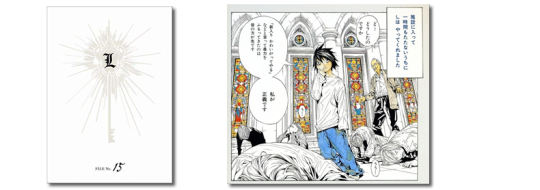
Though he has evidently not washed his hands of L or his successors – in what has been called chapter 109, the one-shot special (Weekly Shonen Jump, volume 11 ) featuring Near shows that 3 years after Light’s death, Roger is serving as Near’s Watari …
It is not entirely clear whether or not Roger continues the successor program beyond this point. Though, “L: Light Up The New World” does have the IVF Ryuzaki as a new successor, he is not a child.
Additionally, Near states in the main manga (Volume 9) that in order to ensure that Mello will not be killed by the death note, that those at Wammy’s that have known Mello have been dealt with [対処]. It is unclear what all having been dealt with would entail, beyond that they can be expected to stay silent on Mello’s appearance.

This along with Vol. 9, page 166 - Near states that if he and Mello die (if he is wrong about the 13 days rule), Kira would have won - Suggesting there are no further challengers lined up at this point.
It remains unclear whether Roger is H or continues the successorship program after he is clearly not at his post anymore 3 years post-Kira case - But, he does become Near’s Watari (which is Wammy’s code name meaning handler).


I is also in Wammy’s group email.

Ide did use an I as an alias during the Kira case (arc 2). However, this is the same font used by Light when he is behind the alias L and Near’s N in the manga, it is not Cloister Black nor Old English MT, it is a different variant of Old English Font.


J is unique in that J is a letter that has been assigned to two individuals…
J of “L: The Prologue to Death Note: Spiraling Trap” [螺旋の罠 コミュニケーター]
J of “Death Note: New Generation”


In the prologue to Death Note, a kidnapped FBI agent wakes up in what appears to be a hotel room (this is following an investigation under L into a weapons trafficking organization CLN in which they were attacked).
It is not a hotel but a boat (Granada) that is full of explosives in some area around Central America, Criela [クリエラ] Republic - it is thought to be headed to the Atlantic Ocean, where it is intended to sink, but the autopilot has been tapered with and it is instead headed to the Altea [アルテア] port which is the controlling area of the Criela government…

This would look like an anti-government attack if it were to explode at port, and L would look as though he had some involvement with his agent aboard.
L makes contact with his agent at the time not knowing their location when, J intercepts the communication, he claims this is part of his revenge… on L.

J claims to be a part of “クリエラの月”, a terrorist group that intends initiate the civil war in this country. However, this is not true and he has very little knowledge of the explosive’s mechanisms, though he is part of the main control program for the explosive’s detonation.

J is a war orphan, described as a man in his late 20s, having a gentle manner. He graduated from college as a programmer and joined Reboot Inc. (group that owns this boat) under his code name Jeffery Miller.
Summary Profile [X]
J lost his family due to CLN’s arranging bombs to be set off during a civil war in what was Yugoslavia.
After the loss, he was entered into the protection of war orphan support groups ( including the Alois Bateson’s Foundation). He was loyal to Alois for his kindness but was deceived – Alois is actually an executive of CLN (COMBAT LOGISTICS NETWORK), multinational military industry in the Middle East.

While the company J works for, Reboot Inc., owns the ship, CLN is a shipping company with a dock large enough to hide this ship and loads it with explosives. The ship is evidence of for L’s investigation and CLN figures as long as the ship detonates, they will have won either way – they will either prove they have a bomb even L cannot defuse and become the go-to weapons supplier or they will have initiated the war they want. J’s role in this is to pretend to be the mastermind to keep L occupied, monitor L’s movements, and manage the Housekeeper (a codename for one of the badguys and the person whom actually placed the bombs on the ship).
J, after learning he has been deceived, has a change of heart - L appeals to his feelings on war and he cooperates with the FBI agent to stop the ship. He is later arrested for his involvement and his true identity is revealed on TV – クリロ・ミラニッチ, Cliro Milanic…
J says to L that he does not regret what he has done because he had the opportunity to talk to L.

The second individual holding the letter [ J ] is J of “Death Note: New Generation” Episode 2. In it, Ryuzaki [L’s official successor] is the IVF child/clone of L that appears in
Ryuzaki appears close to Near and the second “J” – both Near and J do not show their faces through communication with Ryuzaki but do use what appears to be their natural, non-synthetic, voices.

J meets Ryuzaki in person (In Tokyo, Japan), showing up at J’s location semi-unexpectedly. Though he appears to have arrived to retrieve tools for his investigation, J invites him to sit down and enjoy the spread that she has presumably prepared and laid out in anticipation for his arrival, Ryuzaki comments that they are not children anymore – it may be a birthday, celebration for a case solved, or another significant day for them (this takes place before the locked room murders are confirmed to be the work of Kira).

J has recovered the mask that L has used to protect his identity during his investigations and presents it to Ryuzaki as a gift.
J ultimately wants to persuade him to become involved in the new investigation, Ryuzaki and Near have already made an agreement that whomever solved the locked room murder first would be in charge of the case thereafter - Ryuzaki appears to have been resisting becoming involved.

J wants to further assist with the investigation, serving as the new L’s Watari figure. However, Ryuzaki declines the assistance of J, stating Watari’s death was L’s greatest regret…


K is another of the few letters that makes an appearance in both the film and the novelization of L: Change the World.


[ K ] is the first of their letter, another of the few that make an appearance. In her childhood, K an agent of L, serving to mobilize the world’s agencies of law enforcement. She continued her service until a rescue mission to recover a child from the clutches of a terrorist organization destorys her faith in herself and the world.

The rescued child was that of the terrorist mastermind and upon being received by the rescue camp, they detonated an explosive attached to their body - it was a suicide bombing, a parent sacrificing their own child to kill others.

After witnessing what K describes as many casualties, she abandons her post at Wammy’s at 16 years old, saying she is ashamed of her failure. [176]

K leaves but not to go into hiding, she is out for revenge…

When she is around 30 (26 years after the deaths of her parents) she has situated herself in the organization Blue Ship—an environmental terrorist group intending to reduce the human population through utilization of a deadly virus, for which there is only one cure.

The organization is ruthlessness, knowing no loyalty or limitation as they regularly dispose of their own team members (119)…


One member (Dr. Kagami, writer of “Alert Status Red: The Human Species” ) is stabbed to death and feed to eels in front of his team members.

K is critical piece to their plan as she assimilates herself into the research laboratory of Dr. Nikaido (immunologist ), a personal friend of Watari, single parent, family friend of the Amane family, and former professor of Wammy’s house.
After working with Nikaido for several years, even tutoring his child, she betrays him. Even the chimpanzees that K works with appear to sense that she is dangerous – But, Dr. Nikaido’s death was accidental, upon being confronted by the masked members of Blue Ship asking him to surrender the virus, he provokes one into shooting him with the intention that if they cannot obtain the cure then they will not use the virus (for fear of being infected with no means of saving themselves)…

— Dr. Nikaido deletes the data on the cure through a hacking security systems created by Q, given to him through Wammy. But, K knows her way around it from the inside and ultimately, it is unable to stop the terrorist infiltrators. The body of Dr. Nikaido and the living animals inside are incinerated in the fire induced by Blue Ship…

When it comes to Wammy’s alumni, it does not get much more diabolical than K. Backup (B) may take the cake for being infamously grisly but K, Dr. Kimiko Kujo, after absconding from her role with Wammy’s house, successfully obtains a deadly virus to unleash upon humanity – ultimately betraying Wammy’s, her coworkers, L, her terrorist team, and even herself – with the intent to indiscriminately wipe out the species entirely in a bid for revenge.
She is perhaps the most apocalyptic of the first generation letters. The events that put K on this path are as brutal as the events that follow obtaining the virus :

— Her parents were the victims of an explosive fire in a lab on the East Serras Island, their place of work as researchers (though not involved in the research into infectious weapons). The destruction of the laboratory was the decision of the US government after the discovery that some of the researchers, belonging to a terrorist organization, were on the brink of constructing a deadly biological weapon they intended to use in response to the presidential election. A key individual in the attack is Matoba, a leader in Blue Ship– he carries a facial scar from the explosion and becomes another K infects.
Aside from her terrorist team, Dr. Nikaido, L, and Wammy’s— F is another causality of her plot, investigating the sudden outbreak that is the result of Blue Ship testing out the virus to demonstrate it’s deadly applications to potential buyers (for 4billion). With F appearing to be around the same age as K, this may in fact mean she is the catalyst of the demise of one of her own peers.

There appears to be no clear limit with how far K will take her plan…
She even impersonates L, abusing her hacking prowess to get into the Kira investigation system, to contact the US president (David Hope), making a request of 10 billion USD or L would end the president’s life after compelling them to launch nuclear missiles at London, Moscow, and Beijing. She nearly succeeds as VP Godwin actually suggests using a small nuclear weapon to kill L. In spite, of Secretary of State, Beal, asserting that it would initiate a war with Japan.
This is in attempt to provoke the US government into hunting down and eliminating L. At the time, this is a tangible threat, not only is L in possession of 2 death notes but the US has sent an FBI agent— Hideaki Suruga (Hideaki Sugita), FBI agent taking up Naomi’s duties, close friend of both Raye and Naomi, even would have hosted the wedding reception — to retrieve the death notes.
Agent Suruga, was initially working with Agent Robert Fairman –turning out to be an FBI infiltrator attempting to stage a vehicular explosion that would kill Surgua and seem as though the files too were destroyed.
These files contained the details of the 1980’s Attache Case—the explosion that took the lives of K’s parents.
Though K presents herself initially to Suruga as part of the Tokyo Police Department, Public Security Bureau, 3rd Foreign Affiars division – Counterterrorism division, K reminds the FBI agent of Naomi herself. Suruga remarks internally upon discovering K attempting to hack into L’s security – “Damn, women are scary.”
She is perhaps from the first generation, appearing to be the appropriate age, around the same as F, and is referred to as the first of her letter. This may in fact mean she is the catalyst of the demise of one of her own peers (F)..

This event seems to have taken place after B’s death or imprisonment, going on the suggestion that B is dead from L’s contact list, and perhaps after the disappearances or deaths of X, Y, and Z as well..
It can also be inferred that this takes place after J’s arrest given that F is still alive and active during J’s crime.
Additionally, Sugita’s partner Fairman, is Naomi’s replacement as of 1 day after her quitting, and Naomi doesn’t quit the FBI until 2003. [009]
K brings some light to how one’s letter is passed on to another; K is arrested and given a life sentence though L informs her that Watari has said, should she ever be able to return, she would be forgiven and could resume her role as K.
What’s a little mass-homocide when you’re a 1st gen successor? Actually, .. L suggests that her lack of faith in humanity comes from her being a student of Wammy’s. – To which K agrees…



O has yet to be assigned.

P also appears in Wammy’s group email.



Q appears in Wammy’s group email and is the person whom build the program for K’s laboratory security.




[R] is in the group email but grayed out, suggesting they are deceased.


[S] has yet to be assigned.


[T] is in the group email but grayed out, suggesting they are deceased.



[U] has yet to be assigned.

[V] is in the group email but grayed out, suggesting they are deceased.



[X], [Y], and [Z] are the last of the first generation, mentioned as being involved in the detective wars that earned L the code names of Eraldo Coil and Danuve.


“… The story of the detective war… solving that infamous bioterror case, with guest appearances by the first X through the first Z from Wammy’s house…” – [170]

In the original Japanese edition, they are specifically referred to as 初代 X - Z which means the first generation or the original ones, the first generation.

This may be interpenetrated as suggesting there were others later on that held these letters but X,Y, and Z do not appear in L’s Wammy contact list in “L: Change the World”.
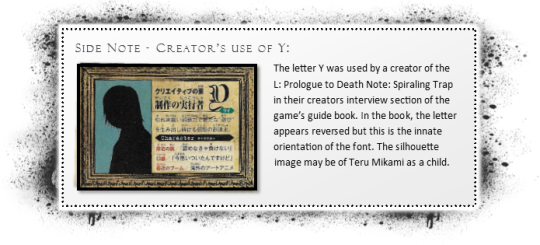

In less than 17 years – between the time of L’s discovery and death –several successors veered off the intended path. In fact, being a successor between just the 1st and 3rd generations, your chances of committing suicide are at least 257x higher than that of the general population of the UK, your chances of imprisonment are 277x higher, your chances of committing murder are 770x higher …
And, that is a conservative estimate – given we only know the fates of a few.
The children are brought out of the obscurity and given an opportunity for a greater purpose for which the world cannot discount. In their world, L himself is essential in preventing the third world war. Even ignoring the death note, their world is a increasingly dangerous, full of violence, war, and weaponry that could devastate the planet – In some ways much like our own. These are intelligent and exceptional enough to lead their world into the future, their education hones and harness their innate abilities to serve the greater good. But, it is at the price of their ignorance and often their faith in humanity, exhausting their compassion and, in some instances, with a nihilistic perspective.
Childhood’s veil of security is often lost when one loses their parents, the world never feels quite as safe when you live through something that destabilizes your entire life. Compounded with the realities that others are not exposed to, the worst of humanity, the parts that make you wonder how a person can live with themselves, the call to action is urgent and dire.
For some, failing their responsibilities to the world is too great a shame to bare. Yet, others are so full of their own malice, life is a small price to pay to prove a point…
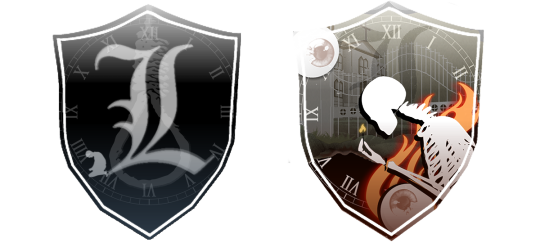
Then there are those that will live to leave, only to bring war to your nations…

But worst of all these children are those cunning and determined and devastated enough that they will bring the apocalypse …

Can you image what 2, or 3, or more could do?

This is why the existence of Wammy’s children necessitizes the existence of Wammy’s children …


Reiterating, – these works were not created to function perfectly together on a timeline. For example, “Death Note Another Note” and “L: The Prologue to Death Note: Spiraling Trap” both erroneously presented Naomi Misora as already engaged to Ray though Ray does not propose to Naomi until 2003.
In order to create a functional timeline, we must assume at least 3 things:
The F of Spiraling Trap (J’s case) is the same involved in “L: Change the World” (K’s case)
The contact list in “L: Change the World” has greyed out contacts that were alive at the creation of the contact list but are deceased based on L clicking 6 times (D, E, G, I, P, and K).
We can dismiss the mention in Spiraling Trap and DNAN [124] that Naomi is engaged and has an engagement ring.

Now we can begin constructing a rough timeline, starting with the first generation:
A must have died before the creation of the contact list.
X, Y, and Z also seem to have died before the creation of the contact list.
B was on contact list before death and before DNAN, placing the creation of the contact list before the events of DNAN.

Next is Spiraling Trap, Prologue to DN, J’s Case:
J is not on the contact list which places the events that led to J’s arrest to be before the creation of the contact list (and DNAN).
F’s involvement places it before K’s case
Additionally, Naomi’s involvement places J’s case before her retirement in 2003 and her leave of absence in 2002.

Finally for K’s case:
The deaths (or disappearances) or R, T, and V must have occurred after the creation of the emailing list because it would not make sense for dead successors to be included, unless they were added while still alive.
Additionally, their deaths must have happened before K’s case because they are dead before L begins to investigate.
H is possibly Roger and at the time of K’s case, H is alive.
D, E, G, I, and P appear to be alive at the time of K’s case.
Q is also alive based on their letter’s inclusion in the contact list and their involvement in the security system of the lab in which K begins work.
F dies during K’s case but is active during J’s which gives more evidence to J’s case taking place before K’s.
Though it is a side note, L: Change the world mentions B’s case (089) which clearly places the events in the same universe and taking place after the events of DNAN.
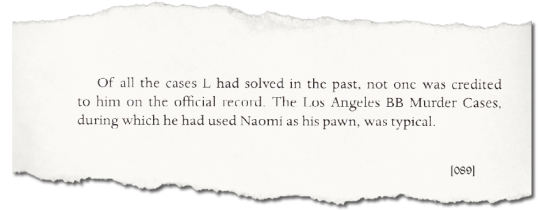
Additionally, the book gives an idea of what month these events are taking place in when mentioning a time for the next victim of the death note (125):
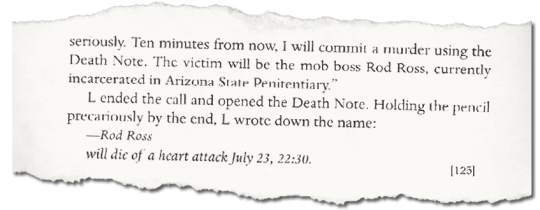

If L established a means of contact before the LABB case, it makes sense why J reacts the way he does at the end of his story:
At the end of J’s case, J appears to be so honored that L has communicated with him that J concludes that the crime has still been worth it in the end.
It also may make sense why K seems so surprised that L knows that she is from Wammy’s house, not at all concerned about being recognized when meeting face to face.
In conclusion, K happens sometime around the Kira era but before the conclusion of it, B’s case occurs before that and J’s before that.

#beyond birthday#the first child#death note a#I will eventually screen shot where Watari talks about F and add some notes in here about B's name#I also want to make mention of Babel being another B#wammys house#Wammy's Kids#wammysfirstchild#wammy's A#The Detective Wars#brilliantanddeviant#xyz#wammys first generation#meta
209 notes
·
View notes
Text
Friends, Lovers, and the Big Terrible Thing by #MatthewPerry #NewBooks #AudiobookReview #Friends #TVShow #Memoir
I'm just a few years younger than the gang on the 1990's show Friends, and I loved it like the rest of my generation. Friends, Lovers, and the Big Terrible Thing by #MatthewPerry #NewBooks #AudiobookReview #Friends #TVShow #Memoir #BookReview
In an extraordinary story that only he could tell, Matthew Perry takes readers onto the soundstage of the most successful sitcom of all time while opening up about his private struggles with addiction. Candid, self-aware, and told with his trademark humor, Perry vividly details his lifelong battle with the disease and what fueled it despite seemingly having it all. Friends, Lovers, and the Big…

View On WordPress
#1990&039;s Movies#1990&039;s Television#Actor#Courtney Cox#David Schwimmer#Friends#Friends Lovers and the Big Terrible Thing#Jennifer Aniston#Lisa Kudrow#Matt LeBlanc#Matthew Perry#Memoir#Must See TV#NBC#TV Show
1 note
·
View note